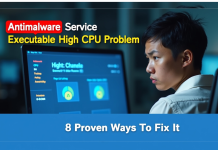Running a storage business is hard. The right self-storage management software can help you save time, grow revenue, and keep customers happy. In 2025, owners and managers require tools that operate efficiently, align with staff workflows, and seamlessly integrate with other systems.
This guide breaks down the top 10 features you should look for, with simple examples you can use today. Whether you run one site or many, the proper setup turns busy days into smooth days. You will also see how Storeganise and similar platforms solve common pain points in clear, practical ways.
Key Takeaways
- In 2025, effective self-storage management Software must meet changing customer habits with online bookings and clear data.
- Top features include a unified dashboard, online reservations, integrated payments, keyless access, and dynamic pricing.
- The right software reduces manual tasks, enhances cash flow, and improves tenant satisfaction through automation.
- Select vendors carefully, ensuring their tools integrate seamlessly, provide reliable support, and enable data exports.
- Ultimately, strong self-storage software pays for itself by reducing errors, speeding up rentals, and increasing revenue.
Table of Contents
Why It Matters Now
Customer habits have changed. Many renters want to book and pay online at any hour. Teams want fewer clicks and fewer errors. Leaders want clear data they can trust. The right tools do all three at once.
Look for tools that reduce admin work and improve cash flow. For example, automated billing for storage units helps cut late payments and prevents manual mistakes. When systems communicate with each other, your staff can focus on delivering service, not paperwork.
Top 10 Features Your Self Storage Management Software Needs
Below are the key features that set great self storage management software systems apart in 2025. Each feature is simple in idea but powerful in daily use. Together, they help you win more move-ins, reduce costs, and grow lifetime value.

Unified Dashboard for Operations
You should be able to see the whole business at a glance. A clean dashboard displays occupancy, revenue, delinquencies, tasks, and alerts in one convenient location. Staff can identify issues quickly and take action before they escalate.
Example: A site manager logs in and sees three overdue accounts, one pending move-in, and a gate access alert. With one click per item, they solve each one in minutes, without needing to switch between five screens.
Online Reservations and Digital Move-Ins
Renters expect to book and sign from their phone. Your website should show unit sizes, prices, real-time availability, and photos. The system should allow customers to reserve, e-sign the contract, upload their ID, and pay the first invoice online.
This lowers front desk traffic and reduces no-shows. It also captures leads 24/7 when your office is closed. Clear steps and simple forms help maintain high conversion rates.
Integrated Payments and Smart Billing
Payments should be secure and straightforward. Look for card and ACH support, saved payment methods, and retries. Clear dunning rules help you recover revenue without extra work.
Once the rules are set, the system charges on the correct date, sends reminders, and applies late fees according to policy. Your team spends less time chasing payments and more time serving tenants.
Keyless Access and Smart Control
Access control should be integrated into your software. This lets you grant or revoke entry based on status. If rent is unpaid, the system can block gate access and notify the tenant. Once paid, access is restored.
Smart access also improves safety. You can track who entered and when, spot odd patterns, and set alerts for after-hours activity. This brings peace of mind to both staff and renters.
Dynamic Pricing and Discount Rules
Your pricing should adapt to demand. When a unit type is almost complete, prices should rise. When occupancy is low, prices should drop, or promotions should be triggered. Good rules prevent underpricing and protect revenue.
Set easy guardrails and let the system adjust rates within a range you trust. You can also run time-limited specials during slow seasons. This maintains steady occupancy while protecting margins.
CRM and Lead Management
Every inquiry should live in one place. Sound systems track calls, emails, chat, and walk-ins. Each lead gets a status, notes, and next steps. Reminders help staff follow up on time.
Example: A lead asks about a 10×10 unit. The system sets a follow-up for tomorrow, sends a helpful email, and adds a promo code. When the lead returns, the agent can view the entire history and close the rental more quickly.
Work Orders and Maintenance
Units should be clean, safe, and ready for use. A task tool enables staff to log issues, assign work, and track the status to completion. Use checklists for move-outs, pest control, and safety checks.
This reduces missed steps and improves speed to readiness. Clear records also help with training and compliance. Managers can view open tasks by priority and remove bottlenecks in real time.
Reporting, KPIs, and Alerts
Leaders need precise numbers to make good decisions. Key reports include occupancy, effective rate, average length of stay, move-ins and move-outs, delinquency, and revenue by product.
Good tools let you schedule reports and set alerts. For example, when delinquency passes a set point, the system pings the manager. When a price floor is reached, it triggers a review of the rate. This helps you act before performance slips.
Mobile-First Tools for Staff and Tenants
Most work now happens on phones or tablets. Staff apps should display today’s tasks, arrivals, unit status, and quick actions such as overlock or unlock. Tenant portals should enable renters to pay, update their cards, purchase locks, or add insurance with just a few taps.
Quick, tap-friendly design keeps lines short and customers happy. It also helps new staff members ramp up faster, as the screens guide the process step by step.
Open API and Integrations
Your software should connect to other tools you use. Common links include accounting, access control, marketing, insurance, call tracking, and business intelligence. An open API lets you build or connect custom tools as you grow.
This reduces double entry, cuts errors, and unlocks new use cases. As your needs change, you can easily plug in new partners without needing to switch your core system.
Digital Documents and E-Signatures
Paper slows things down. Digital contracts with legally compliant e-signatures save time and reduce risk. Tenants should be able to review terms, sign, and get a copy by email. Staff can store documents in the tenant profile for easy access.
This keeps your office tidy, improves record-keeping, and speeds move-ins. It also helps when you need to pull proof for audits or claims.
Fraud Prevention and Secure Compliance
Trust is key. Look for tools that help verify identity, encrypt data, and track consent. Support for audit logs, role-based access, and secure backups protects your business.
Example: During online move-in, the system checks ID and flags a mismatch. Staff can request more info before granting access. This lowers risk and keeps good tenants safe.
Real-World Example: One Site to Many
A small operator starts with one site and a few unit types. With the right stack, they set simple rules: online move-ins, smart billing, and basic task flows. As they add two more sites, they enable dynamic pricing and integrate the accounting systems.
Because the system scales, the owner keeps the same workflows. Reports now roll up across all sites. Weekly time on admin drops by hours. Revenue per unit rises as pricing adapts to demand.
Where Storeganise Fits
Modern platforms like Storeganise focus on simple workflows and strong automation. Teams get clean dashboards, online bookings, smart billing, and open integrations. For many operators, this balance of ease and depth is what keeps growth steady without adding headcount.
If you plan to expand, look for flexible tools that can accommodate your needs. You should be able to start with the basics and add advanced features when ready, without re-training the whole team.
How to Choose the Right Vendor
Picking software is a big call. Use a clear checklist to ensure a good fit.
- Core workflows: Can staff do daily tasks in fewer clicks?
- Billing: Are payment methods, retries, and notices reliable?
- Integrations: Does it connect to your key tools now and in the future?
- Data: Are reports clear, timely, and exportable?
- Support: Is onboarding guided, and response time fast?
- Security: Are roles, logs, and backups strong and proven?
Ask for a hands-on trial. Set up a test site, run mock move-ins, and verify edge cases, such as partial payments or unit transfers. Have a frontline manager test it, not just leadership. Their feedback will reveal gaps fast.
Common Pitfalls to Avoid
Do not make a decision based on a single feature. Ensure the entire flow works seamlessly end-to-end. Watch out for hidden fees that punish growth. Verify that your team can manage updates independently without requiring support for every change.
Avoid tools that lock in your data. You should be able to export records and integrate freely. Ask how often the vendor ships updates and how they handle bugs.
Budgeting and ROI
Strong systems often pay for themselves. Savings come from fewer manual tasks, fewer no-shows, and faster collections. Revenue gains come from dynamic pricing, improved conversion rates, and higher tenant lifetime value.
Plan for both software costs and a small setup time. A focused, two-week rollout with clear goals often beats a slow, open-ended project. Track KPIs before and after to prove ROI.
Conclusion
Great tools make hard work simple. In 2025, the best self-storage management software should provide clear views, smooth online rentals, intelligent billing, and accurate data you can trust. It should integrate with your other systems and scale as your business grows.
Start with the features that matter most to your site: online move-ins, strong access control, and clean reporting. Add dynamic pricing and deeper integrations as your needs rise. Keep your team involved in testing so the system can accommodate real-world daily tasks.
With the right setup and a reliable DOGE Software Licenses Audit HUD system, you can reduce errors, expedite rentals, and increase revenue. Focus on tools that save time every day and protect margins every month, your future renters and your staff will feel the difference.











